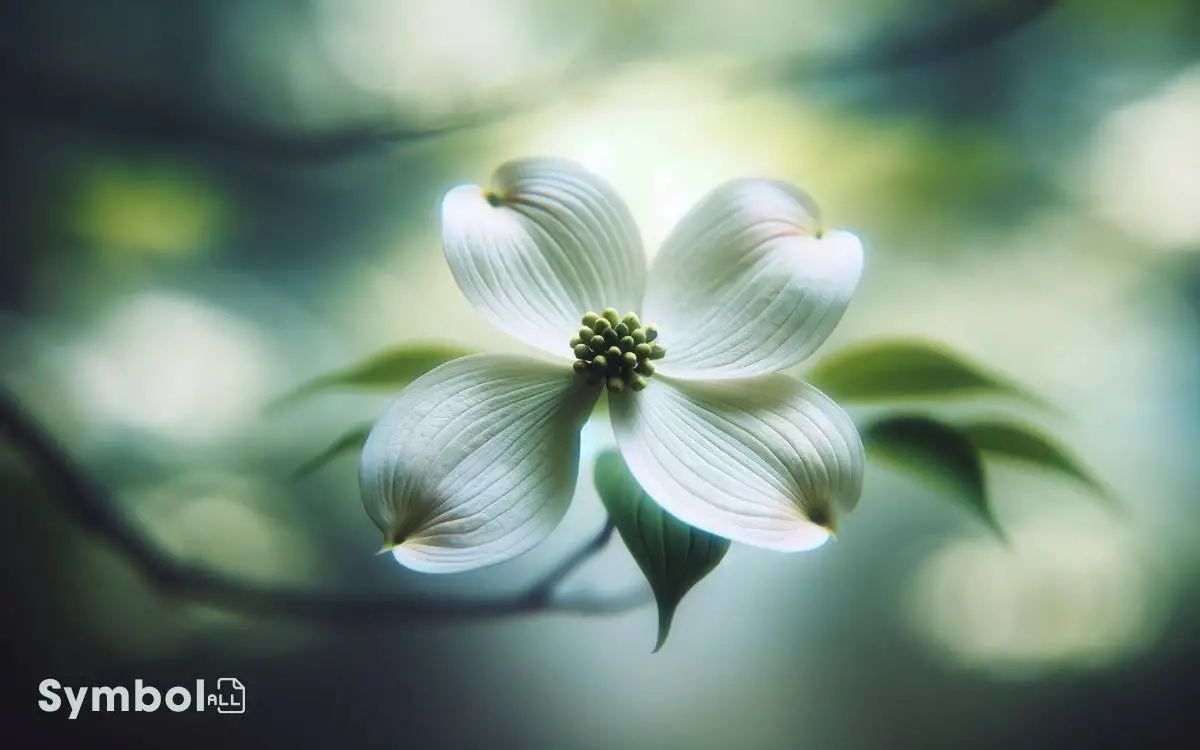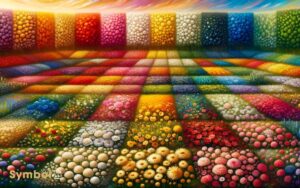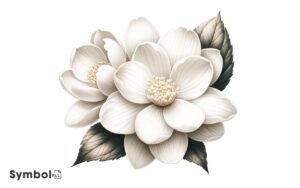What Does the Dogwood Flower Symbolize? Resilience!
You’ll find the dogwood flower symbolizes resilience, renewal, and beginnings anew across cultures. Its delicate blossoms carry profound Christian significance, embodying sacrifice, rebirth, and eternal life.
Historically, it’s linked to endurance, protection, purity, and innocence. Emotionally, dogwood represents love and affection, highlighting these emotions’ enduring, complex nature. It showcases strength and adaptability, reflecting human perseverance under adversity.
Ecologically, dogwoods are pivotal, supporting biodiversity and promoting ecosystem health. Each season, they echo life’s persistence and recovery.
Within Native traditions, they signify renewal, protection, and deep environmental connection. Each layer of meaning enriches your understanding of this emblematic bloom.

Key Takeaways
Historical Significance
The historical significance of dogwood flowers spans centuries, embodying resilience and renewal across various cultures. In inquiring about their symbolic value, it’s important to explore the botanical and ecological facets that contribute to their symbolism.
Dogwoods, belonging to the genus Cornus, exhibit remarkable adaptability to diverse climates, illustrating nature’s resilience. This characteristic has led societies to associate them with inner strength and the ability to withstand life’s challenges.
Analyzing their phenology, dogwoods typically herald the arrival of spring, their blossoms symbolizing new beginnings and the rejuvenation of nature.
This temporal significance has imbued them with cultural importance in heralding change and promoting a sense of hope.
Scientifically, their role in ecosystems as keystone species supporting varied wildlife further underscores their symbol of interconnectedness and ecological importance.
Christian Symbolism
In Christian tradition, dogwood flowers carry profound symbolism, often linked to themes of sacrifice, rebirth, and eternal life.
The four petals of the dogwood flower are said to represent the cross, with each petal bearing a notch that symbolizes the wounds of Christ.
Moreover, the red stamens in the center of the flower mimic the Crown of Thorns, deepening its association with the crucifixion.
This detailed imagery serves not only as a reminder of Christ’s sacrifice but also embodies the promise of new life and resurrection.
The dogwood’s enduring bloom each spring reinforces themes of renewal and hope, core tenets of the Christian faith.
Cultural Representations
Beyond its religious significance, dogwood flowers embody a rich tapestry of meanings across various cultures, each interpreting its symbolism through a unique lens of traditions and beliefs.
In Japanese culture, the dogwood represents endurance and strength, often associated with samurai warriors who epitomized these virtues.
Native American tribes, on the other hand, see the dogwood as a symbol of protection and safety. They used the tree’s hard, durable wood for making tools and weapons, imbuing these objects with the tree’s resilient spirit.
Meanwhile, in Victorian England, the dogwood flower was a symbol of purity and innocence, frequently featured in art and literature of the era.
Each culture’s interpretation reflects its values and societal norms, showcasing the dogwood’s versatile symbolism across different historical and social contexts.
Love and Affection
Dogwood flowers symbolize love and affection, exploring as nature’s evidence of the enduring and multifaceted nature of these emotions. When you investigate their biological and ecological characteristics, it’s evident how they embody these human sentiments.
The resilience of dogwood trees, capable of thriving in varied environments, mirrors the persistence and adaptability required in love. Their blooming cycle, a spectacle of renewal and growth, reflects the dynamic nature of affection, which evolves and deepens over time.
Additionally, the interdependence between dogwood flowers and their pollinators exemplifies mutual support, a cornerstone of any loving relationship.
This symbolic relationship highlights the complex interactions and balance necessary to sustain love and affection, illustrating that these emotions, much like the dogwood, require nurturing conditions to flourish.
Purity and Innocence
Amidst their diverse symbolism, dogwood flowers also represent purity and innocence, reflecting these traits through their delicate appearance and the environments they inhabit.
In botanical terms, the purity of dogwood flowers is often linked to their color. Mainly white, with some species showcasing pink hues, these colors traditionally symbolize innocence and purity in floral language.
Scientifically, the dogwood’s pristine white bracts, which are often mistaken for petals, serve a critical function beyond their aesthetic appeal; they attract pollinators, ensuring the continuation of their species in their native woodland habitats.
This interaction between form and function in the natural world underscores the dogwood’s embodiment of purity and innocence, not merely as abstract concepts, but as observable phenomena integral to the life cycle of the plant.
Strength and Durability
Despite their delicate appearance, dogwood flowers symbolize strength and durability, reflecting these qualities through their ability to withstand various environmental conditions.
These resilient blossoms aren’t merely ornamental; they’re a proof of endurance, thriving in a range of climates and soils.
Their hardy nature is emblematic of perseverance, making them an apt metaphor for human resilience in the face of adversity.
Scientifically, the dogwood’s robustness can be attributed to its adaptive growth patterns and efficient photosynthesis process, which guarantee its survival and blooming year after year.
This botanical fortitude is what makes the dogwood a symbol of unwavering strength, reminding you that beauty often stems from the ability to endure and flourish under challenging circumstances.
Renewal and Rebirth
You observe the dogwood flowers as they mark the commencement of spring, embodying the essence of awakening in nature.
Their lifecycle mirrors the concept of fresh starts, as they shed their old foliage to bloom anew, illustrating nature’s resilience through its resurgence cycle.
This process highlights the dogwood’s symbolic representation of renewal and rebirth, underpinning its significance in ecosystems and human culture alike.
Springtime Awakening Essence
The blooming of dogwood flowers in spring symbolizes a period of renewal and rebirth, reflecting nature’s cyclical return to energy. This event isn’t merely aesthetic; it embodies the essence of springtime awakening.
Scientifically, the emergence of dogwood blossoms coincides with increased sunlight and warmer temperatures, triggering a complex biological process within the plant.
This process involves the activation of dormant genes responsible for flower development, a phenomenon that underscores the intricate relationship between environmental cues and genetic expression.
For you, the observer, witnessing this transformation offers a tangible representation of the broader ecological renewal. It’s a reminder of the resilience and adaptability of life, encapsulating the promise of growth and rejuvenation inherent in the changing seasons.
Lifecycle Fresh Starts
How does the lifecycle of dogwood flowers exemplify the concepts of renewal and rebirth within natural ecosystems?
The dogwood tree, through its distinct phases from dormancy to blooming, symbolizes the endless cycle of life, death, and rebirth. Each stage in its lifecycle is a proof of nature’s resilience and ability to regenerate.
| Stage | Significance |
|---|---|
| Dormancy | A period of rest and energy conservation, preparing for the renewal phase. |
| Blooming | The emergence of flowers symbolizes rebirth and new beginnings. |
| Seed Dispersal | Seeds represent the potential for new growth, continuing the cycle of life. |
This cyclical process underlines the dogwood’s role in symbolizing fresh starts and the perpetual motion of nature’s cycles, offering insight into the dynamics of ecological rebirth.
Natures Resurgence Cycle
Nature’s resilience manifests through its remarkable cycle of renewal and rebirth, illustrating the inherent mechanisms that guarantee ecosystems begin and thrive.
You’ll find that in the wake of disturbances be it natural disasters like fires, or human-induced changes nature starts on a systematic recovery process.
This involves the germination of dormant seeds, the sprouting of new life, and the eventual re-establishment of a diverse ecosystem. The dogwood flower symbolizes this very process. It blooms in the spring, a visual metaphor for life’s persistence amid adversity.
Its appearance is a reminder that, despite the harshest winters, life finds a way to press on, renewing and rebirthing itself in a continuous cycle of resilience and adaptation.
Connection to Nature
As you delve into the symbolism of dogwood flowers, it’s essential to grasp their profound connection to nature through symbolic native traditions, which provide a diverse tapestry of cultural heritage and spiritual significance.
Their blossoming patterns mirror seasonal changes, serving as a vibrant reflection of nature’s cyclic rhythms and the passage of time.
Additionally, dogwoods play a pivotal role in their ecosystems, highlighting their ecological importance and the intricate balance within natural habitats.
Symbolic Native Traditions
Within Native traditions, dogwood flowers hold profound symbolic significance, deeply intertwining with the natural world and embodying themes of renewal, protection, and connection.
These flowers are not merely decorative elements but are imbued with rich symbolic meanings that reflect a deep understanding of the environment.
| Theme | Symbolism | Native Interpretation |
|---|---|---|
| Renewal | Spring Rebirth | Marking the return of vitality and growth after winter’s dormancy. |
| Protection | Guardian Spirits | Believed to ward off negative energies and ensure safety. |
| Connection | Earth’s Cycles | Symbolizing the interdependency between flora, fauna, and humans. |
This intricate relationship highlights a respect for nature’s cycles, emphasizing the dogwood’s role in indigenous cultures as more than a plant it’s a crucial part of the ecosystem and spiritual practices.
Seasonal Changes Reflection
Reflecting seasonal changes, dogwood flowers serve as a vivid indicator of the shifting dynamics within ecosystems, directly linking plant physiology to broader environmental patterns.
Their blooming phase, typically in spring, signals a period of renewal and growth, aligning with increased solar energy and warmer temperatures.
This change not only marks a critical phase in their reproductive cycle but also mirrors the cyclic nature of ecosystems. As temperatures cool and days shorten, dogwood leaves undergo a dramatic transformation, showcasing vibrant autumnal hues before leaf fall.
This seasonal rhythm, underscored by the dogwood’s phenological responses, illuminates the intricate relationship between climate variables and biological phenomena.
It underscores the dogwood’s role in heralding seasonal shifts, offering insights into the temporal dynamics that govern natural landscapes.
Ecological Importance Highlighted
Dogwood flowers play an essential role in supporting biodiversity, acting as a keystone species within various ecosystems. They’re not just visually appealing; they provide critical habitat and sustenance for a myriad of species.
The blooms attract pollinators such as bees and butterflies, facilitating cross-pollination and thereby promoting genetic diversity among plant populations.
Beyond pollination, the dogwood’s fruit offers nourishment to birds and mammals, ensuring their survival and aiding in seed dispersal.
This interdependence underscores the dogwood’s contribution to ecosystem resilience and health. As you observe the dogwood, it’s crucial to recognize its role in maintaining ecological balance.
Its existence supports a complex web of life, showcasing nature’s intricacy and the importance of conservation efforts to protect such invaluable species.
Mourning and Remembrance
Many cultures have historically associated dogwood flowers with mourning and remembrance, attributing specific symbolic meanings to their appearance and blooming cycle.
The dogwood’s fleeting beauty, with flowers that bloom intensely but briefly, mirrors the human experience of loss intense yet transient.
You’ll find that in the blooming pattern of these flowers, there’s a representation of life’s cyclical nature, including death and rebirth.
Scientically, the dogwood’s resilience, thriving in various conditions, symbolizes the enduring nature of memory and the strength found in remembrance.
Its hardy nature, capable of withstanding harsh winters only to bloom again, serves as a metaphor for the human spirit‘s ability to persevere through grief and remember loved ones after they’ve passed.
Modern Interpretations
While traditional associations emphasize mourning and remembrance, contemporary interpretations of dogwood flowers have expanded to encapsulate diverse meanings, including hope and renewal.
This shift reflects broader societal changes, where symbols evolve to meet the emotional and psychological needs of the community.
In modern contexts, the dogwood flower symbolizes resilience; its ability to bloom profusely after harsh winters serves as a metaphor for overcoming adversity.
Scientifically, this resilience can be attributed to the dogwood’s adaptability in various climates and conditions, mirroring the human capacity for growth and renewal amid challenges.
Consequently, the dogwood’s symbolism today resonates with themes of perseverance, transformation, and the promise of new beginnings, embodying a more optimistic outlook compared to its historical connotations.
Conclusion
To sum up, the dogwood flower embodies a rich tapestry of meanings, from purity and rebirth to love and mourning. Its significance is deeply rooted in history and culture, offering a multifaceted symbol that resonates on various levels.
Consider the annual Dogwood Festival in Atlanta, where these flowers symbolize community and renewal, showcasing the deep connection between nature and societal traditions.
This example underscores how dogwood’s symbolism isn’t just theoretical but deeply ingrained in real-world practices, highlighting the intricate relationship between human culture and the natural world.






